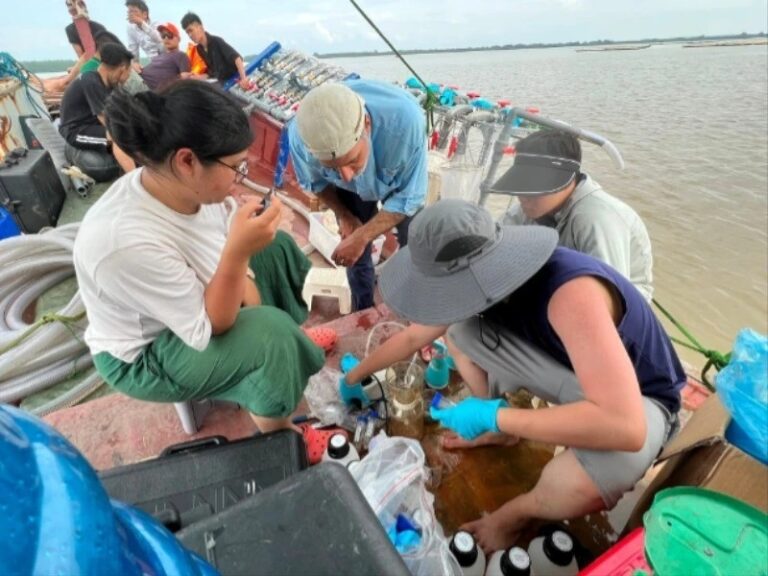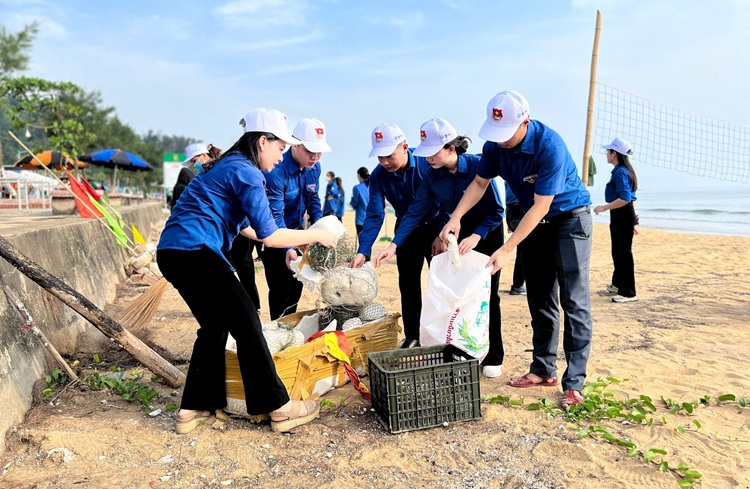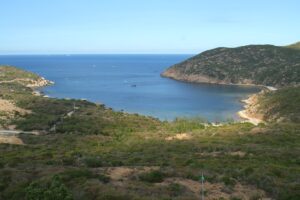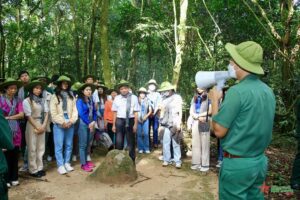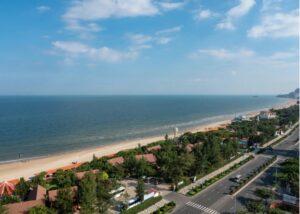National parks in two central provinces of Nghe An and Ha Tinh have strengthened measures to protect wildlife as well as maintain their ecosystems, contributing to environmental protection.

Veterinarian Nguyen Tat Ha gives food to a Rhesus macaque in Pu Mat National Park in the central province of Nghe An. (Photo: nhandan.vn)
Tran Dinh Anh, deputy head of the Science, Technology and International Cooperation Department under the Vu Quang National Park, told Nhan dan (The People) online newspaper that the national park is caring for six northern pig-tailed macaques (Macaca leonine) and Rhesus macaques (Macaca mulatta); 40 turtles and a python (Python molurus), which were injured in traps or shot by poachers. Once they are healthy enough, they will be released back into the wild.
The staff of the national park have gained experience and skills in caring for the injured animals, Anh said.
Every time an injured animal is found, the staff of the national park will treat the animal, he added.
They also contact colleagues in wildlife rescue centres to learn how to treat and take care of each type of animal, he said.
At the Pu Mat National Park in the central province of Nghe An, veterinarian Nguyen Tat Ha, who has been caring for wildlife for 18 years, said injured animals can be very aggressive, with some requiring sedation.
Ha said the animals need urgent treatment, but this can be dangerous if the animal feels threatened and attacks the park staff.
Ha found this out the hard way, and has a scar on his right arm.
“So, whenever giving first aid to an injured animal, I always look at the scar, which reminds me to be careful,” he said.
Luu Trung Kien, deputy head of the national park, said the national park has treated thousands of injured wild animals over the past 18 years.
It has built facilities and allocated staff to set up the national park’s wildlife rescue centre, he said.
Normally, the animals will be released into the wild after three months of treatment, he said.
However, many animals need years of care before being released, he added.
Currently, there are two bears and four gibbons that are kept in cages because these individuals have lost their wild instincts, he said.
Therefore, special care and training is given so that the individuals could gradually adapt to the natural environment, he said.
Biodiversity conservation, anti-poaching
Thai Canh Toan, deputy director of the Vu Quang National Park, said in addition to receiving and caring for injured wild animals, the national park also coordinated with domestic and foreign scientists and experts to conduct surveys and research on biodiversity conservation in the national park.
There were two species discovered in the Vu Quang National Park in the last century. They were saola (Pseudoryx nghetinhensis) and giant muntjac (Muntiacus vuquangensis).
The national park is home to many endangered and rare species of flora and fauna such as tigers, saola, gaur, elephants, giant muntjac and red-shanked douc, he said.
Nguyen Huu Trung, coordinator of the specialised forest protection group in the Pu Mat National Park, said poachers were now using more sophisticated traps and lures. They do not set traps following a fixed route but at random points, causing difficulties for the forest rangers.
Therefore, the scope of the search must be expanded, covering dozens of kilometres of forest roads to patrol and remove traps to protect the wildlife, he said.
In addition to 72 forest rangers, the national park also receives the support of Save Vietnam's Wildlife and Fauna & Flora International in animal rescue, scientific research and improving the effectiveness of law enforcement by community-based forest protection teams, he said.
As a result, it has ensured a highly-safe living environment for animals, he said.
Commercial logging has been stopped and the setting of traps to catch wild animals has decreased significantly, he said./.


